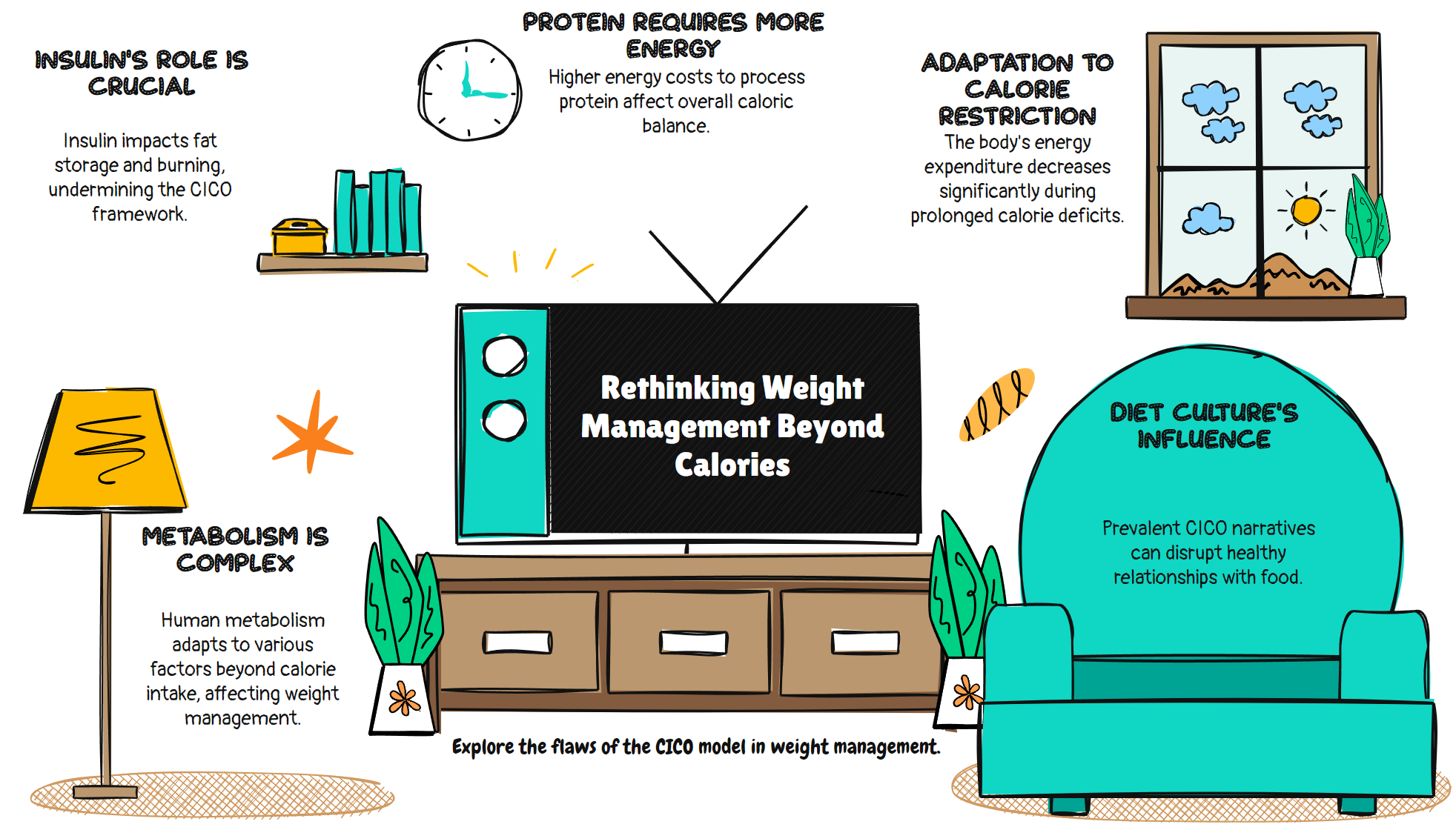
Your Body Ignores Calorie Math
Your Body Ignores Calorie Math
I remember the first time I truly understood that human metabolism doesn't follow simple arithmetic. After years of watching people meticulously count calories while their weight loss stalled, something didn't add up. The revelation came while studying how different foods affect hormone levels: your body isn't a calculator—it's an intricate biological system with priorities far beyond calorie tallies.
The seductive simplicity of "calories in, calories out" (CICO) has dominated weight loss conversations for decades. But this model, while intuitively appealing, fundamentally misunderstands how human metabolism actually works.
When Physics Met Biology (And Missed The Point)
The CICO model's origin story begins with the First Law of Thermodynamics—energy cannot be created or destroyed, only transformed. Scientists in the 19th century began measuring the energy content of foods using bomb calorimetry, literally burning food in sealed containers to measure heat output.
But human bodies aren't bomb calorimeters.
Early researchers made a critical error: they treated complex biological systems as simple closed systems. This misapplication created the foundation for a weight management approach that sounds scientific but misses crucial biological realities.
The weight loss industry eagerly adopted this convenient framework. "Just burn more calories than you consume" became the rallying cry for countless diet programs. Public health messaging followed suit, embracing the mathematical elegance of CICO while ignoring metabolic complexity.
The Biological Reality CICO Ignores
Human metabolism involves dynamic processes orchestrated by hormones, enzymes, and neural signals that respond differently to various foods, regardless of calorie content. Consider how your body processes 500 calories of candy versus 500 calories of salmon:
The candy triggers insulin spikes, promotes fat storage, and leaves you hungry shortly after. The salmon activates different metabolic pathways, requires more energy to digest, and keeps you satisfied longer. Same calories, wildly different metabolic outcomes.
The Randle Cycle, which describes how your body selectively chooses between burning glucose or fatty acids based on availability and insulin levels, further demonstrates this complexity. For those with insulin resistance, consuming high-carbohydrate foods—regardless of calorie content—can lock fat inside cells while simultaneously triggering hunger.
This isn't just academic nuance. It's the difference between sustainable weight management and endless cycles of restriction and rebound.
When "Burning Calories" Burns You Out
CICO's focus on caloric deficits has fueled countless unsustainable dieting approaches. I've seen clients who diligently maintained deficits of 500-1000 calories daily, only to hit plateaus after a few weeks. The research explains why: prolonged calorie restriction triggers metabolic adaptation.
Your body, facing what it perceives as energy scarcity, intelligently downregulates metabolism. Basal metabolic rate decreases. Hormone levels shift to promote energy conservation. Even seemingly "non-negotiable" energy expenditures like body temperature and movement efficiency adjust to preserve resources.
The result? The same deficit that initially caused weight loss eventually maintains weight—requiring ever-increasing restriction to continue progress.
When dieters inevitably return to normal eating patterns, their metabolically-adapted bodies often store energy more efficiently than before. This explains the familiar pattern of weight rebound exceeding pre-diet levels.
Beyond CICO: A Metabolic Approach
Shifting focus from calorie math to metabolic health offers a more sustainable pathway. This means prioritizing how foods affect your hormonal environment rather than just their energy content.
I've found that emphasizing nutrient density, protein adequacy, and fiber-rich whole foods naturally regulates appetite while supporting metabolic flexibility—your body's ability to switch efficiently between different fuel sources. Instead of fighting biology with willpower, this approach works with your metabolic systems.
The most successful weight management approaches I've witnessed target hormonal balance first, especially insulin regulation. When people focus on meal timing, protein distribution, and minimizing processed foods, their bodies often naturally gravitate toward appropriate energy intake without constant counting.
Does this mean calories don't matter at all? No—energy balance still exists. But the inputs and outputs aren't fixed values in a simple equation. They're dynamic variables influenced by the types of food you eat, your hormonal environment, gut microbiome, sleep patterns, stress levels, and countless other factors.
The human body evolved sophisticated regulatory systems long before nutrition labels existed. Understanding and working with these systems—rather than reducing them to calorie arithmetic—offers a more effective path to sustainable health.
After decades of watching CICO dominate weight management conversations despite modest success rates, it's time to embrace the beautiful complexity of human metabolism. Your body isn't ignoring the math—it's solving a far more interesting equation than we've given it credit for.
